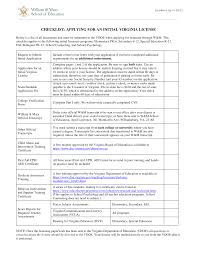
Sketching in location is a shared interest of many people. Urban Sketchers, an international community of artists who draw on location, is one example. A great way to learn is to copy someone else's sketch. And, building a sketchbook collection is a good learning tool too!
Analyse sketch world
Researchers must select the right map to analyse the sketch world. This will depend on the goals of the analysis. You might want to align the sketch with the environment. However, orienting the map should be done objectively and with a minimum configural theta. To do so, first arrange landmark labels on the map. Once that is done, they can rotate the sketch map using the rotate buttons. After turning the map, researchers can preview their configural steps to ensure they are correctly orienting the map.
Sketches are not linear proportional and sub-linear. This means that when an input stream is sent to a sketch, it will be processed much faster than it would be if it were processed through brute force. Therefore, the sketch will be much smaller than its input stream.

Urban Sketchers is a worldwide community of artists who sketch in situ
Urban sketching is an art form that has been around for centuries, but recently has gained momentum. Digital photography has become so popular that people share their images online. Sketchers used to share their work in sketchbooks. However, they quickly realized that digital media was a better way to showcase their work. Gabi Campanario set up a Flickr blog and group for sharing the work of these sketchers. Later, it grew to become the Urban Sketchers.
Urban sketching is an art form that allows artists interact with the urban dynamic and documents it. For example, many sketchers and artists sketch in Odessa. It is rare to find an art form that combines modern observation with documentation of the natural environment.
A useful and valid learning tool is to copy someone else's sketch.
Copying the work of other artists is a good idea for beginners. It will help you to get an idea of your goals and give you a better understanding of the art of other artists. This is a great way for you to improve your drawing skills and appreciate the beauty of art.
The sketch world is full of examples. It is important to avoid copying other people's sketches. Although you can learn from someone else's sketch, it's still a bad idea to claim it as your own work.

A sketchbook collection
You can share your work with others by building a collection. You can find a sketchpad or notebook for any artistic style. There are many paper options so you can find the right one for whatever you are working on.
You can also use sketchbooks to take notes and keep track of your drawings. Some sketchbooks also have grocery lists, calendars, and to do lists. The creator can also use sketchesbooks to create private museums.
FAQ
What is a vocational high school?
Vocational schools offer programs for those who are interested in a particular occupation. They may also provide general education courses and training in skills needed by employers.
Vocational education plays an important role in our society, as it helps young adults develop the skills needed to succeed in everyday life. It provides students with high-quality learning experiences.
The vocational school offers a wide range of options to its students. These include certificates, diplomas and degrees, as well as apprenticeships and certificates. Vocational school students learn both academic subjects and more practical subjects like math, science, English or social studies.
What is the purpose and function of education?
Education should equip students with the skills they need to be successful in work. It is not just an academic pursuit but also a social activity where children learn from each other and gain confidence by participating in activities such as sports, music, and art. It is all about teaching students how to think critically, and how to create so they can be independent and self-reliant. What does it take to achieve high educational standards
Education standards that ensure all students reach their full potential are good. They provide a clear set of goals teachers work towards with their pupils. Educational standards should be flexible enough that schools can meet changing needs. Fair and equitable education standards must also be maintained: Every child is equal in terms of chance of success, regardless of his/her background.
What is early childhood education?
Early Childhood Education is a profession that aims to help children become happy, healthy adults. It can teach them everything, from reading to getting them ready for kindergarten.
Early childhood education's goal is to help children learn through age-appropriate experiences.
Early childhood educators are often called upon to assess the developmental needs of each child they come across. This helps to decide if a particular program would benefit each child.
Parents can also interact with teachers and other professionals with experience with young children through early childhood programs.
A key role in early childhood education is also played by parents. They should be able and willing to help their children in any way they can.
Parents are also welcome to participate in activities to help their children learn skills they will use throughout their lives.
Sometimes, early childhood education is also called preschool education. However this term is interchangeable with daycare centers. Prekindergarten education starts around three years ago, and early childhood education is similar.
How long should you spend on college preparation?
The time that you intend to spend studying for college is a function of how much you want to spend on it. It is a good idea to start college preparation courses immediately if your goal is to attend college as soon after you graduate high school. However, if your plan is to delay attending college for several years, you may not need to start planning.
It is important to discuss your plans and ideas with your parents, teachers, and other family members. They might recommend certain courses. Track the grades and courses you've taken. This way, you'll know exactly what you need to accomplish next year.
Statistics
- “Children of homeowners are 116% more likely to graduate from college than children of renters of the same age, race, and income. (habitatbroward.org)
- And, within ten years of graduation, 44.1 percent of 1993 humanities graduates had written to public officials, compared to 30.1 percent of STEM majors. (bostonreview.net)
- Think of the rhetorical power of nineteenth-century abolitionist Harriet Beecher Stowe, Martin Luther King, Jr., or Occupy Wall Street activists with their rallying cry of “we are the 99 percent.” (bostonreview.net)
- Data from the Department of Education reveal that, among 2008 college graduates, 92.8 percent of humanities majors have voted at least once since finishing school. (bostonreview.net)
- Globally, in 2008, around 89% of children aged six to twelve were enrolled in primary education, and this proportion was rising. (en.wikipedia.org)
External Links
How To
How to enroll in homeschooling
Homeschooling means that children are educated at home using a variety methods like reading books, watching videos or doing exercises. This method of learning is thought to be one of the best because it allows students to learn at their own pace and to develop skills such problem-solving skills, creativity, self discipline, communication, as well as social skills.
Many parents want to educate their kids at home. In this case, they can opt for homeschooling, which allows them to dedicate their time and energy to their children's education without having to worry about finding someone to take care of their children while they go to work.
Homeschooling offers many benefits. One of them is the ability for students to develop critical thinking and creative skills. Another is their ability increase their knowledge and language skills.
Homeschooling is designed to give quality education to students so that they can succeed as adults. However, certain requirements must be fulfilled before starting homeschooling. One of these requirements is to determine whether your child is eligible to attend public or private schools. The type of curriculum that you choose to use for homeschooling is an important consideration. You have many options when it comes to curricula online. These can be customized to suit your needs, budget and level of expertise. Some of these include classical, Montessori, Waldorf, Reggio Emilia, Charlotte Mason, unschooling, natural learning, and others. Another requirement that you must fulfill before starting homeschooling is to make sure that you have the required resources needed to teach your child. This means buying books, educational materials as well as computers, electronics, toys, and games. These items may be bought online, or purchased in local stores.
Once you have completed these steps, you can apply to become a homeschooling mom. It is best to ask your state education department for help. They can help you complete forms and guide you in how to begin homeschooling.